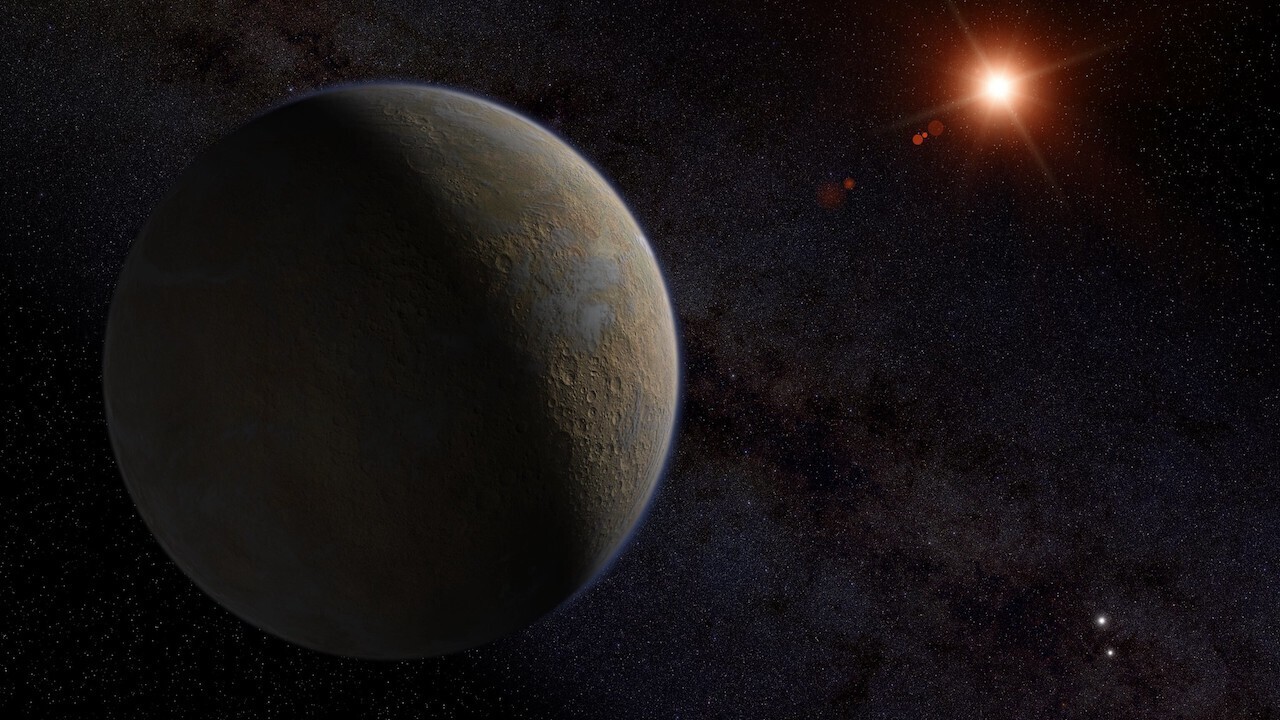All Articles for
Proxima Centauri
Proxima Centauri (Latin , meaning "next to" or "nearest to") is a red dwarf about 4.24 light-years from the Sun, inside the G-cloud, in the constellation of Centaurus. It was discovered in 1915 by Scottish astronomer Robert Innes, the Director of the Union Observatory in South Africa, and is the nearest known star to the Sun, although it is too faint to be seen with the naked eye, with an apparent magnitude of 11.05. Its distance to the second- and third-nearest stars, which form the bright binary Alpha Centauri, is 0.237 ± 0.011 ly (15,000 ± 700 AU). Proxima Centauri is very likely part of a triple star system with Alpha Centauri A and B, but its orbital period may be greater than 500,000 years. Because of the proximity of this star, its distance from the Earth and angular diameter can be measured directly, from which it can be determined that its diameter is about one-seventh of that of the Sun. Proxima Centauri's mass is about an eighth of the Sun's (), and its average density is about 40 times that of the Sun. Although it has a very low average luminosity, Proxima is a flare star that undergoes random dramatic increases in brightness because of magnetic activity. The star's magnetic field is created by convection throughout the stellar body, and the resulting flare activity generates a total X-ray emission similar to that produced by the Sun. The mixing of the fuel at Proxima Centauri's core through convection and the star's relatively low energy-production rate suggest that it will be a main-sequence star for another four trillion years, or nearly 300 times the current age of the universe. Searches for companions orbiting Proxima Centauri have been unsuccessful, ruling out the presence of brown dwarfs and supermassive planets. Precision radial velocity surveys have also ruled out the presence of super-Earths within the star's habitable zone. The detection of smaller objects will require the use of new instruments, such as the James Webb Space Telescope, which is scheduled for deployment in 2018. Because Proxima Centauri is a red dwarf and a flare star, whether a planet orbiting this star could support life is disputed. Nevertheless, because of the star's proximity to Earth, it has been proposed as a destination for interstellar travel.
